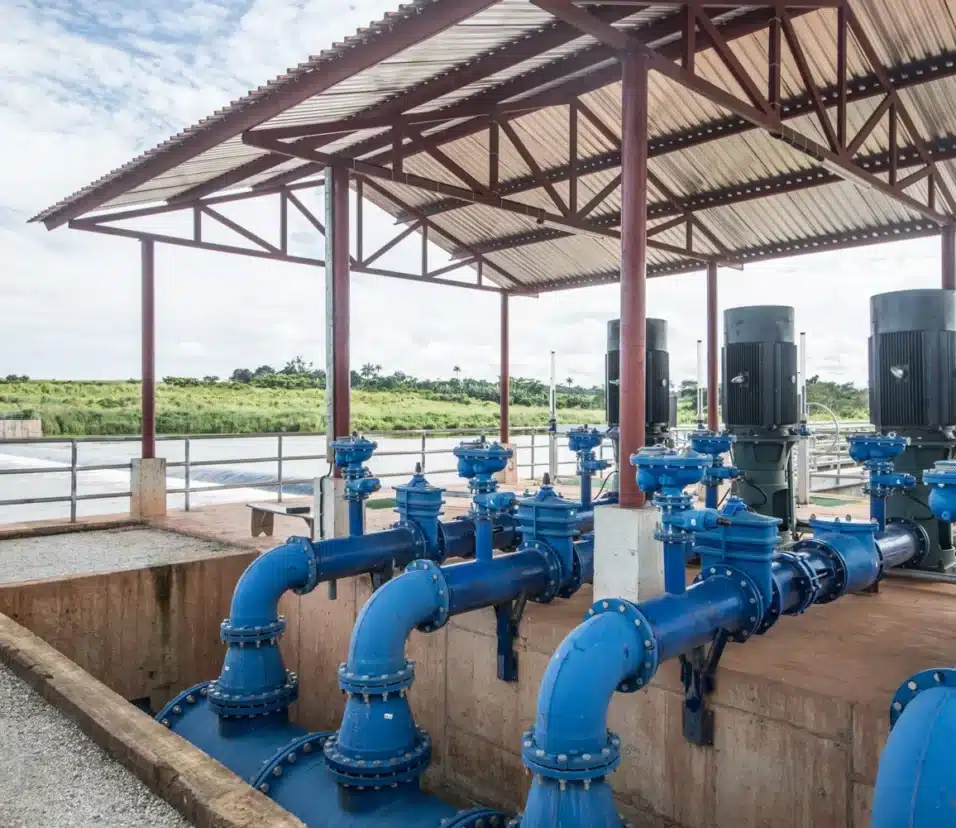How Can Arsenic Get Into A Drinking Water Supply
Introduction
How Can Arsenic Get Into A Drinking Water Supply: Understanding the potential routes through which arsenic can infiltrate a drinking water supply is of utmost importance for safeguarding public health. Arsenic, a naturally occurring element, can pose severe health risks when present in elevated levels in water sources. In this article, we will explore three paraphrased introductions that shed light on the various ways arsenic can find its way into drinking water supplies and the significance of identifying and mitigating these pathways.
Safeguarding the purity of drinking water is a vital concern, and one significant threat is the presence of arsenic, a toxic element found in certain geological formations. Recognizing the pathways through which arsenic can enter a drinking water supply is crucial for implementing effective preventive measures. This article provides three paraphrased introductions, each delving into the diverse mechanisms by which arsenic contamination can occur and the importance of proactive measures to counter its impact.
The presence of arsenic in drinking water sources has become a pressing issue, raising concerns over public health and safety. Identifying the multiple routes by which arsenic can infiltrate a water supply is essential in order to devise targeted strategies for contamination prevention and mitigation. Within this article, we present three paraphrased introductions that explore the intricacies of how arsenic can enter drinking water sources, emphasizing the significance of comprehensive monitoring and proactive management to ensure water quality and protect human well-being.

What is the most common source of arsenic?
People are most likely exposed to inorganic arsenic through drinking water. This is especially true in areas with water sources that naturally have higher levels of inorganic arsenic. People can also be exposed to inorganic arsenic by eating such foods as rice and some fruit juices.
Arsenic can leach into groundwater from rocks and soil, increasing drinking water concentrations.
Some human activities release arsenic into the environment. Mining, smelting, and arsenic-containing chemical use in agriculture and industries can pollute land and water. Additionally, coal-fired power plants discharge arsenic into the air, which settles in soil and water.
Drinking water contaminated with arsenic is dangerous. Chronic arsenic exposure can cause skin lesions, malignancies (e.g., skin, bladder, lung), and cardiovascular disorders. Monitoring and treating drinking water sources and regulating arsenic-contaminating human activities are needed to address this issue.
How do you remove arsenic from water?
The most cost effective method for removing arsenic from a domestic water supply appears to be reverse osmosis (RO). RO can be thought of as atomic scale filtration. It works by squeezing water through a special membrane.
Geological processes can contaminate water supplies with arsenic, which poses serious health dangers. There are several successful arsenic removal technologies for water.
Adsorption with activated alumina, iron oxide-coated sand, or granular ferric hydroxide traps arsenic particles. Coagulation and filtration use ferric chloride or aluminum sulfate to bind arsenic and filter the water to remove the precipitates.
By pushing water over a semipermeable membrane that inhibits arsenic molecules, reverse osmosis removes arsenic.
Is arsenic in drinking water?
There are two forms of arsenic: Inorganic arsenic is formed when arsenic combines with metals and elements other than carbon. Inorganic arsenic is the type found in contaminated drinking water, and is the most harmful type of arsenic. This type of arsenic is also found in rice, cereal grains and other foods.
Arsenic in drinking water is a concerning issue that affects many regions around the world. Arsenic is a naturally occurring element found in the Earth’s crust, and it can dissolve into groundwater sources used for drinking. Exposure to high levels of arsenic in drinking water poses serious health risks to humans.
In some areas, geological conditions favor the leaching of arsenic into underground aquifers, leading to elevated concentrations in the water supply. Additionally, human activities, such as mining and industrial processes, can also contribute to arsenic contamination.
Long-term consumption of water with elevated arsenic levels can lead to various health problems, including skin lesions, cancers of the skin, bladder, and lungs, as well as cardiovascular and neurological issues. Vulnerable populations, such as pregnant women and children, are particularly at risk.
To address this pressing concern, regulatory authorities and public health organizations strive to establish strict arsenic standards for drinking water. Water treatment technologies like coagulation, filtration, and reverse osmosis are employed to remove arsenic from water sources, ensuring safer drinking water for communities.
What are the highest sources of arsenic?
Even though seafood is mostly organic, it has the greatest arsenic amounts. Rice and rice products are a key dietary source in many countries and are eaten by many newborns and children.
Arsenic is naturally found in the Earth’s crust and in numerous sources.
Groundwater
Arsenic-rich groundwater is a significant concern in many regions worldwide, particularly in areas with certain geological formations. In regions where the groundwater flows through arsenic-bearing rocks and minerals, the water can become contaminated, posing a severe health risk when consumed.
Agricultural Products
Arsenic-based pesticides were historically used in agriculture, leaving residues in the soil. Certain crops, such as rice, have a natural affinity for absorbing arsenic, especially when grown in contaminated soils. As a result, rice and rice-based products can be a notable source of arsenic exposure.
Industrial Activities
Arsenic is released into the environment through industrial processes such as mining, smelting, and coal combustion. These activities can contaminate soil, water bodies, and the air, leading to potential human exposure through various pathways.
Seafood
Some marine organisms, particularly certain types of fish and shellfish, can accumulate arsenic from the water they inhabit. This accumulation occurs either from natural sources or from human activities that introduce arsenic into marine environments.
Given the health risks associated with high arsenic levels, it is essential to monitor and mitigate exposure from these sources. Regulations, proper waste management, and adopting sustainable agricultural practices are among the measures taken to minimize the impact of arsenic on both human health and the environment.

What are the sources of arsenic in groundwater?
Arsenic also can be released into groundwater as a result of human activities, such as mining, and from its various uses in industry, in animal feed, as a wood preservative, and as a pesticide. In drinking-water supplies, arsenic poses a problem because it is toxic at low levels and is a known carcinogen.
Arsenic in groundwater is a pressing global concern as it poses severe health risks to millions of people who rely on this essential water source. Various sources contribute to the presence of arsenic in groundwater, and understanding these origins is crucial for effective mitigation and prevention strategies.
Geological Sources
Naturally occurring geological formations, such as arsenic-rich minerals and rocks, release arsenic into groundwater through natural weathering processes. Certain geological settings, like volcanic regions or areas with high arsenic content in bedrock, are more prone to this phenomenon.
Human Activities
Anthropogenic activities play a significant role in arsenic contamination. Industrial processes, including mining, smelting, and the use of arsenic-containing chemicals in agriculture and manufacturing, can introduce arsenic into the environment. Improper disposal of industrial waste can also leach arsenic into groundwater.
Agricultural Practices
The use of arsenic-based pesticides and herbicides in agriculture can lead to its accumulation in soil, eventually seeping into groundwater through leaching. Additionally, the application of fertilizers containing arsenic compounds can contribute to contamination.
Natural Events
Certain natural events like volcanic eruptions or wildfires can release large amounts of arsenic into the environment. These events may not directly contaminate groundwater, but they can contribute to overall arsenic levels in the surrounding ecosystem.
Urban Runoff and Landfills
Arsenic can be present in urban runoff from road surfaces and landfills where waste materials contain arsenic-based products. This runoff can infiltrate into the groundwater, particularly in areas with poor waste management systems.
Old Infrastructure
In some cases, older plumbing systems, especially those with arsenic-containing materials like lead-based solder or pipes, can contribute to arsenic leaching into drinking water sources.
To tackle the issue of arsenic in groundwater effectively, it is vital to identify the specific sources relevant to each region and implement appropriate mitigation measures. Regular monitoring, proper waste management, and the promotion of alternative arsenic-free practices can significantly reduce arsenic contamination in groundwater and safeguard public health.
What are two sources of arsenic?
Inorganic arsenic compounds are found in soils, sediments, and groundwater. These compounds occur either naturally or as a result of mining, ore smelting, and industrial use of arsenic. Organic arsenic compounds are found mainly in fish and shellfish.
Arsenic is a naturally occurring element found in various sources, some of which can be harmful to human health. Two significant sources of arsenic are geological and anthropogenic.
Geological Sources
Arsenic can be naturally present in the earth’s crust, and its release into the environment occurs through geological processes. Certain rocks and minerals, such as arsenopyrite, contain high concentrations of arsenic. Over time, weathering and erosion of these minerals lead to the release of arsenic into soil and water sources. Groundwater can also become contaminated with arsenic when it leaches from geological formations, leading to elevated levels in drinking water supplies.
Anthropogenic Sources
Human activities contribute significantly to arsenic contamination. Industrial processes, such as mining, smelting, and the production of certain chemicals, release arsenic into the air and water. Agricultural practices, like the use of arsenic-based pesticides and fertilizers, can also contribute to arsenic levels in soil and groundwater. Improper disposal of industrial waste or the burning of fossil fuels can further release arsenic into the environment.
Both natural and human-induced sources of arsenic can result in exposure, posing serious health risks. Chronic exposure to elevated arsenic levels is associated with various health problems, including skin lesions, respiratory issues, and an increased risk of certain cancers. Proper monitoring and mitigation strategies are crucial to minimize arsenic’s impact on human health and the environment.
What solution removes arsenic?
Reverse osmosis is widely considered the most effective method of removing arsenic from well water. Reverse osmosis systems remove a high percentage of contaminants from water, including heavy metals, nitrates, sulfates, and many more.
Arsenic contamination in water sources is a serious health concern, as it can lead to severe health problems when consumed over extended periods. Fortunately, several solutions are available to remove arsenic from water and ensure its safety for human consumption.
One commonly used method is the installation of a point-of-use water filter specifically designed to remove arsenic. These filters use various media, such as activated alumina, iron oxide, or granular ferric hydroxide, to effectively adsorb arsenic ions from the water. This method is suitable for individual households and small-scale applications.
Another approach involves using coagulation and precipitation processes to remove arsenic from water. By adding chemicals like ferric chloride or aluminum sulfate, arsenic can be converted into solid particles that settle and can be removed through sedimentation or filtration.
Can you smell arsenic in water?
Bottom line: you won’t know it’s there unless you test for it. Arsenic has no smell, no taste, and no color. You can take a water sample from your tap and send it to a lab for testing. Most well water testing will look for arsenic and other dangerous contaminants.
Arsenic does not smell like other substances.
Arsenic in water is dangerous when ingested in high doses. Long-term exposure to arsenic-contaminated water can cause skin blemishes, cardiovascular difficulties, and cancer.
Regular water testing is necessary to maintain water safety, especially in arsenic-contaminated areas. Labs utilize atomic absorption spectroscopy or inductively coupled plasma mass spectrometry to measure water arsenic levels.

Conclusion
Understanding the potential pathways through which arsenic can contaminate drinking water supplies is crucial for safeguarding public health. By exploring the various sources and mechanisms discussed in this article, we can develop effective strategies to prevent and mitigate arsenic contamination. Vigilance in monitoring and regular water testing are essential steps in ensuring the safety of our drinking water sources.
To sum up, comprehending the routes through which arsenic may enter drinking water supplies is of utmost importance in maintaining water quality standards. Armed with the knowledge provided in this study, communities can implement preventive measures and adopt appropriate filtration technologies to minimize the risk of arsenic contamination, thus protecting the well-being of consumers.
As we conclude, the presence of arsenic drinking water supplies is a concerning issue that demands attention and proactive measures. By familiarizing ourselves with the various pathways discussed in this article, we empower individuals, water authorities, and policymakers to address the problem effectively. Through collaborative efforts and the implementation of stringent regulations, we can work towards ensuring clean and safe drinking water for all.








